The second week of the Italian Serie A had a number of interesting games, with Juventus vs Lazio, Inter Milan vs Torino and Roma vs Atalanta all expected to be tight, hotly contested games. But the pick of the weekend was undoubtedly the game between Napoli and AC Milan, which saw Carlo Ancelotti come up against the side where he achieved his greatest triumphs. The identity of the man in the opposite dugout would also bring back fond memories for Ancelotti, as his midfield general at Milan, Gennaro Gattuso, took the reins of the Rossoneri. All this nostalgia provided the perfect setting for a rip-roaring game at the Stadio San Paolo, as the Partenopei came back from a two-goal deficit to win the game 3-2. It was an extremely interesting and fluid tactical battle, as we will show below.
Lineups
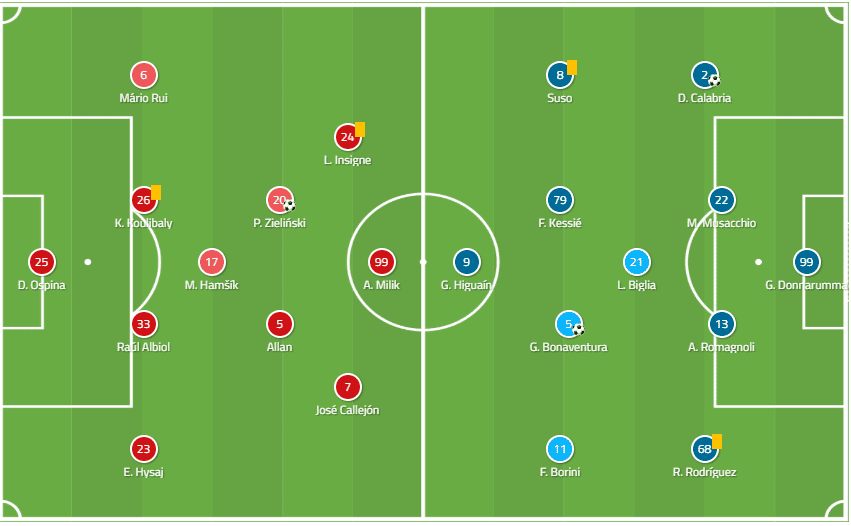
Both teams initially lined up in a 4-3-3, with Napoli captain Marek Hamsik playing as the deepest of the midfield trio in an attempt to fill the departed Jorginho’s shoes, while Milan had the Argentinian Lucas Biglia as the holding player. There was also a start, as expected, for Gonzalo Higuain against his former club.
Biglia dictates play as Milan exploit Napoli’s midfield
Napoli under Ancelotti have looked quite similar to how they were set up by his predecessor Maurizio Sarri, as Ancelotti has sought to make minor adjustments rather than make wholesale changes. The Partenopei therefore started in the same 4-3-3 system as used before, but with Marek Hamsik asked to be the midfield controller. Ancelotti also asked his team to press high up the pitch; however, there was a disconnect between the front three and the rest of the side, meaning that while they pressed the Milan backline, the rest of the side dropped off, leaving oceans of space for the Milan midfield, and especially Lucas Biglia, to exploit.
The Argentinian played just under an hour of the game, in which time he made 57 passes with a 91.2% success rate, of which only 4 were classified as long passes. Biglia kept it simple, circulating the ball through midfield and helping Milan set the tempo of the game. The amount of space afforded to him was criminal, as can be seen below –
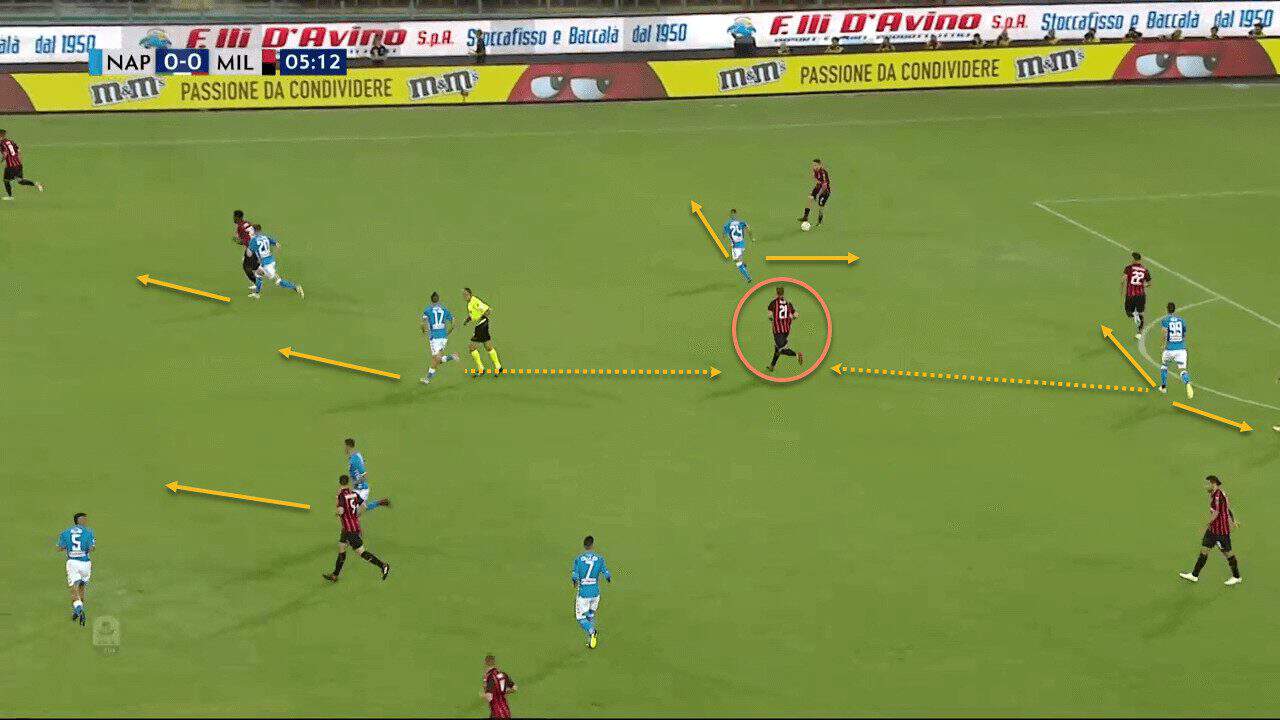
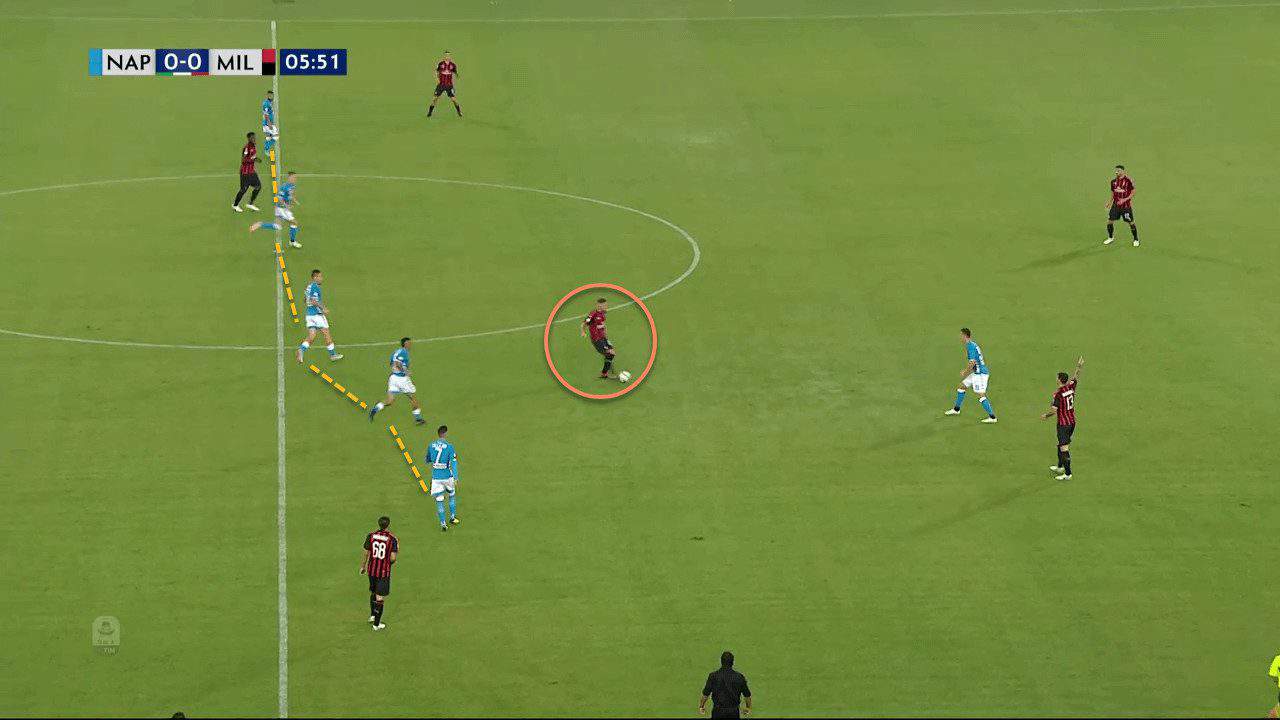
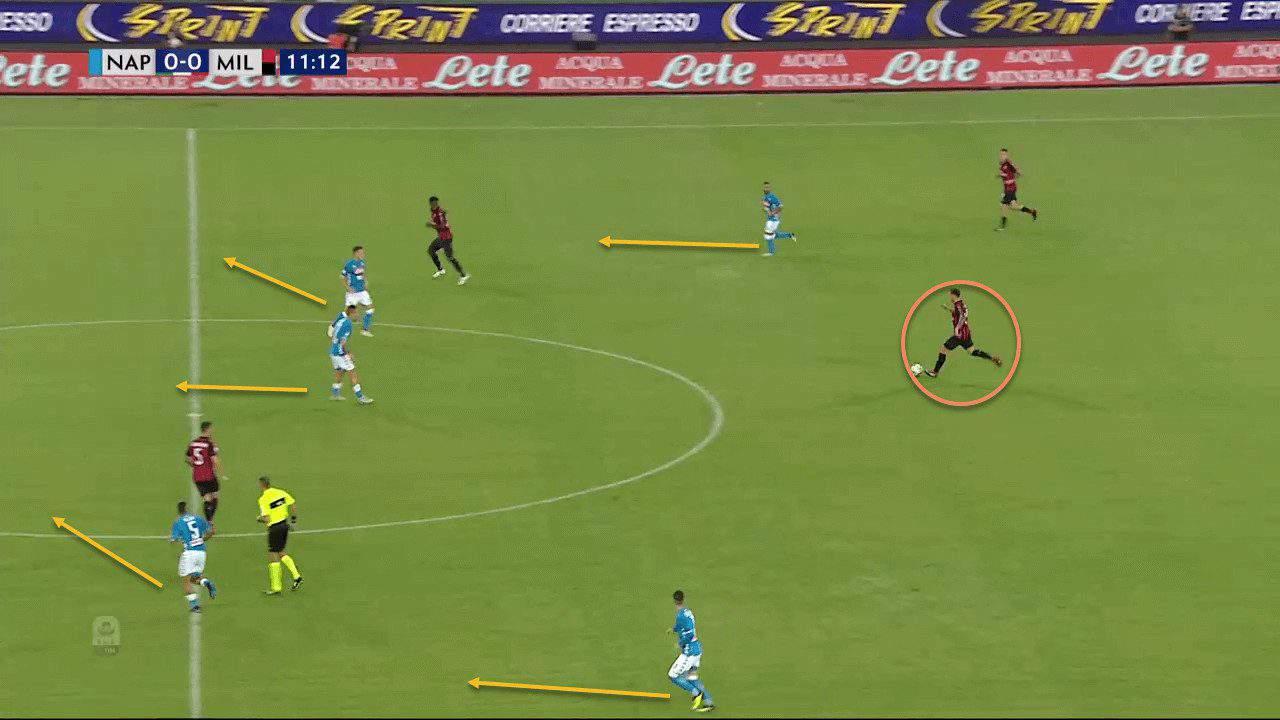
Napoli’s disjointed press allowed the Rossoneri to dominate proceedings, and it was only after his side were 2-0 down did Ancelotti make a tactical change; however, it would be one that would transform the nature of the match.
Piotr Zielinski takes a central role
Piotr Zielinski did not take long to establish himself in Naples following his arrival from Udinese, making 36 appearances in the league in both of his first two seasons at the club. However, more than half of these appearances were off the bench, as he struggled to nail down a regular starting spot. With Jorginho’s departure, however, the Polish international has the opportunity to take a spot in Napoli’s midfield, and he did his chances no harm here with a brace that brought the Partenopei back into the game.
He started off on the left of the midfield three, but as explained above, the lack of a structured press had allowed Milan to dictate proceedings. Milan’s second goal in the 49th minute prompted a change from Ancelotti, where he moved to a 4-2-3-1 with Zielinski as the number 10. This was done with the intention of shutting down Biglia, as he now had a direct opponent in Zielinski whom he had to track, and who would press him when Milan had the ball.
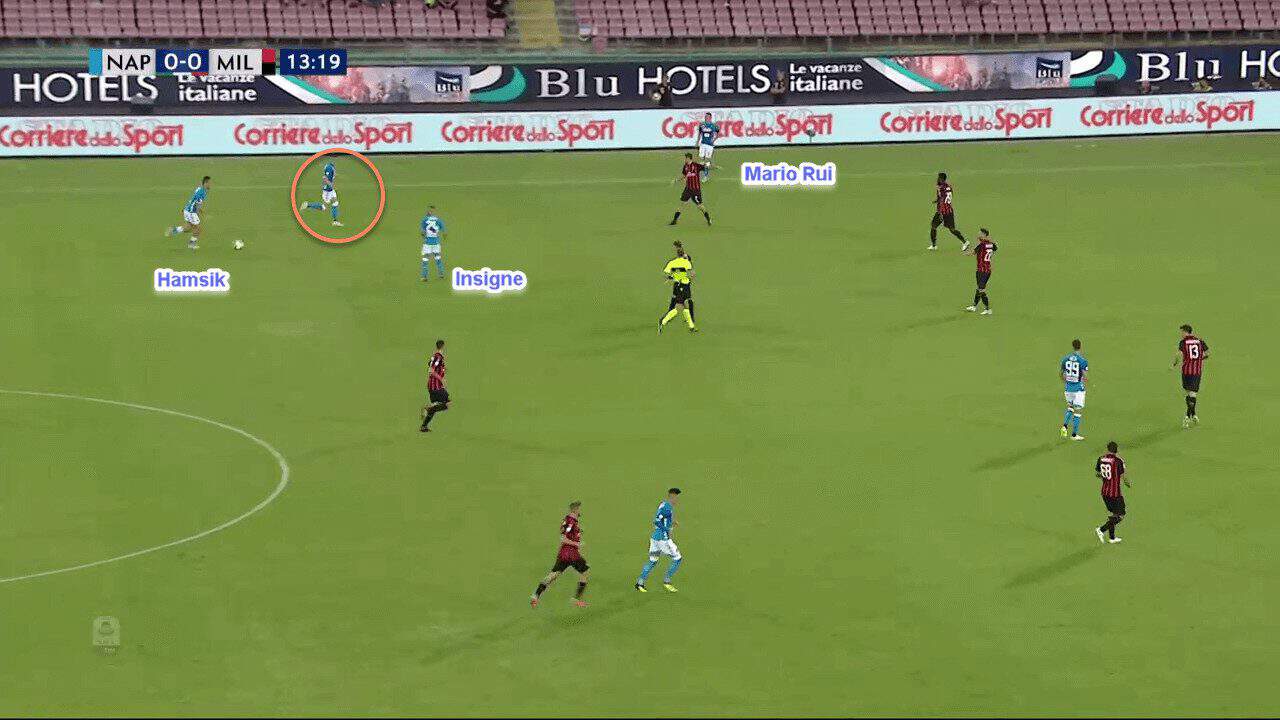
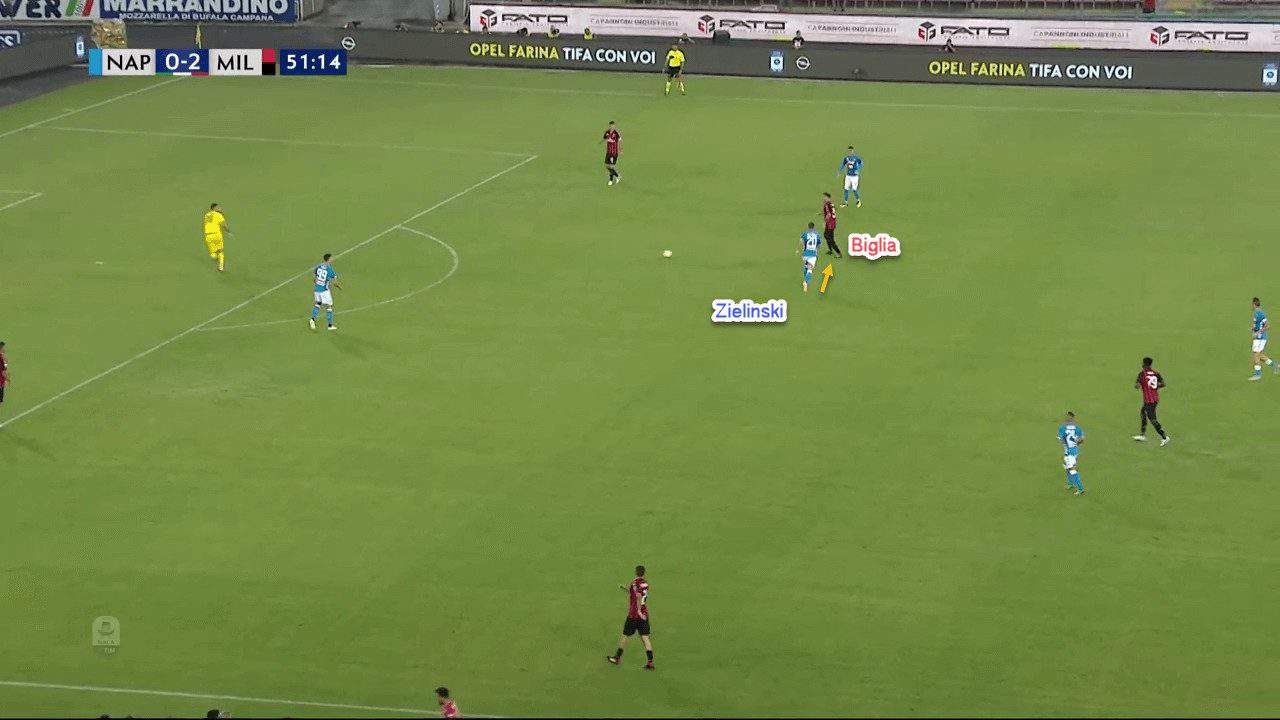
Zielinski still drifted towards the left, but was far more involved centrally and in Biglia’s zone. Another thing that played into his hands was the fact that the Argentinian was substituted for Tiemoue Bakayoko almost on the hour, and the Frenchman proved woefully unable to defend the space in front of his defence. Zielinski was substituted with 20 minutes to go, having scored a brace, but another change, made earlier by Ancelotti, proved to be the difference for the Neapolitans.
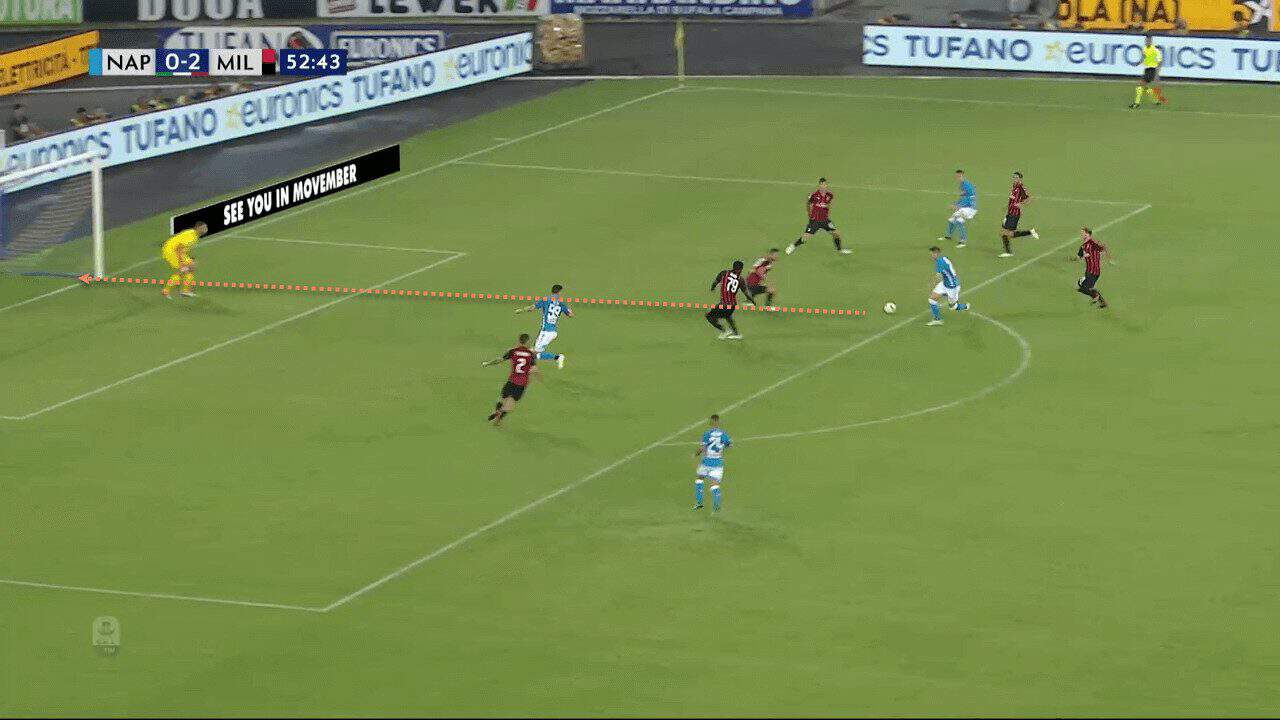
Mertens steps up to change the game
Dries Mertens has been a revelation for Napoli ever since his reinvention as a centre-forward by Sarri. This had been done to cover for Arkadiusz Milik, who had torn his anterior cruciate ligament less than two months into his debut season for Napoli, leaving them without a centre-forward. Mertens stepped up and took Italy by storm, scoring 28 goals in the league as Napoli missed out on the league title by a whisker. It was a similar story the following season as well, as the Belgian notched 18 times to help his club reach a club-record 91 points, yet still fail to dethrone Juventus. Mertens would have expected to have a central role this time around as well; however, after yet another ACL tear last season, this time to his other knee, Milik was finally fit and ready for this season, which meant that Mertens began this game on the bench.
Nevertheless, with Napoli trailing, Mertens came on for Marek Hamsik in the 63rd minute, which meant that Napoli changed shape yet again to something akin to a 4-4-2. This was not a standard 4-4-2, however – Mertens would drift to the left to plug the gap between Lorenzo Insigne on the wing and Milik at centre-forward, while also dropping deep to play as a number 10. His roaming and scheming caused Milan, and especially Bakayoko, numerous problems, and it was fitting that he lashed the ball in for the winner, given how many problems his introduction had caused Milan.
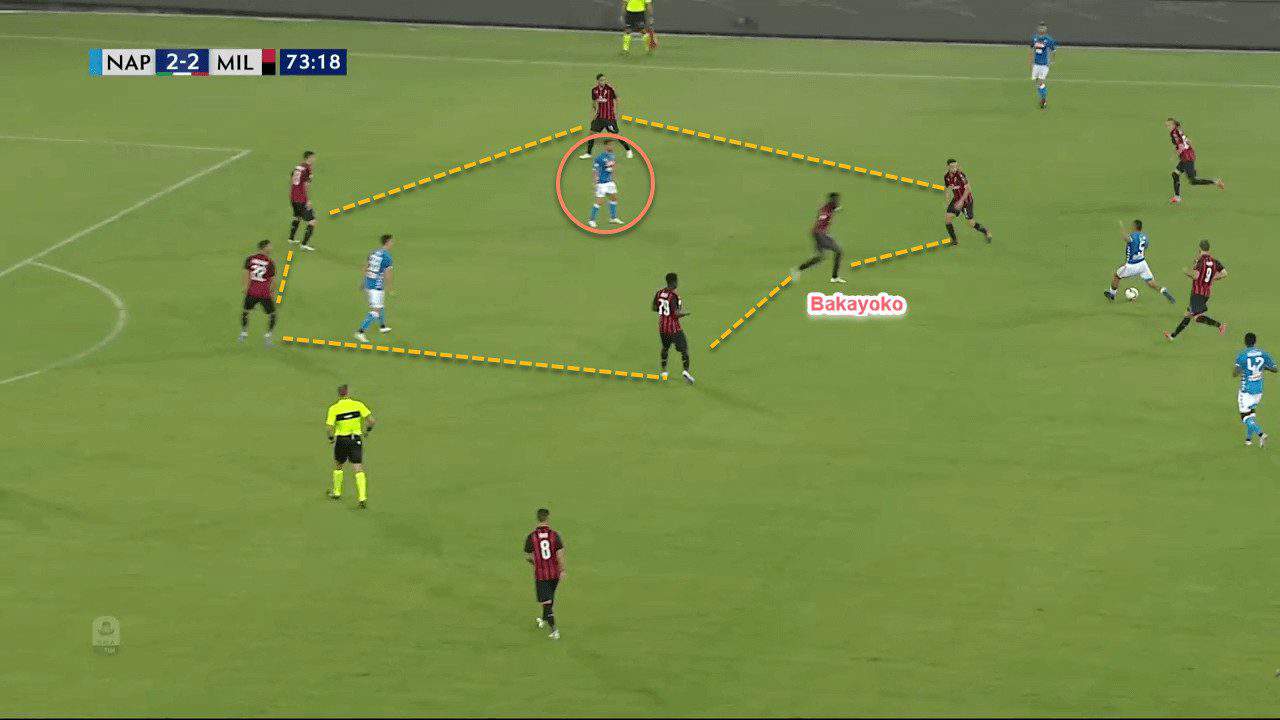
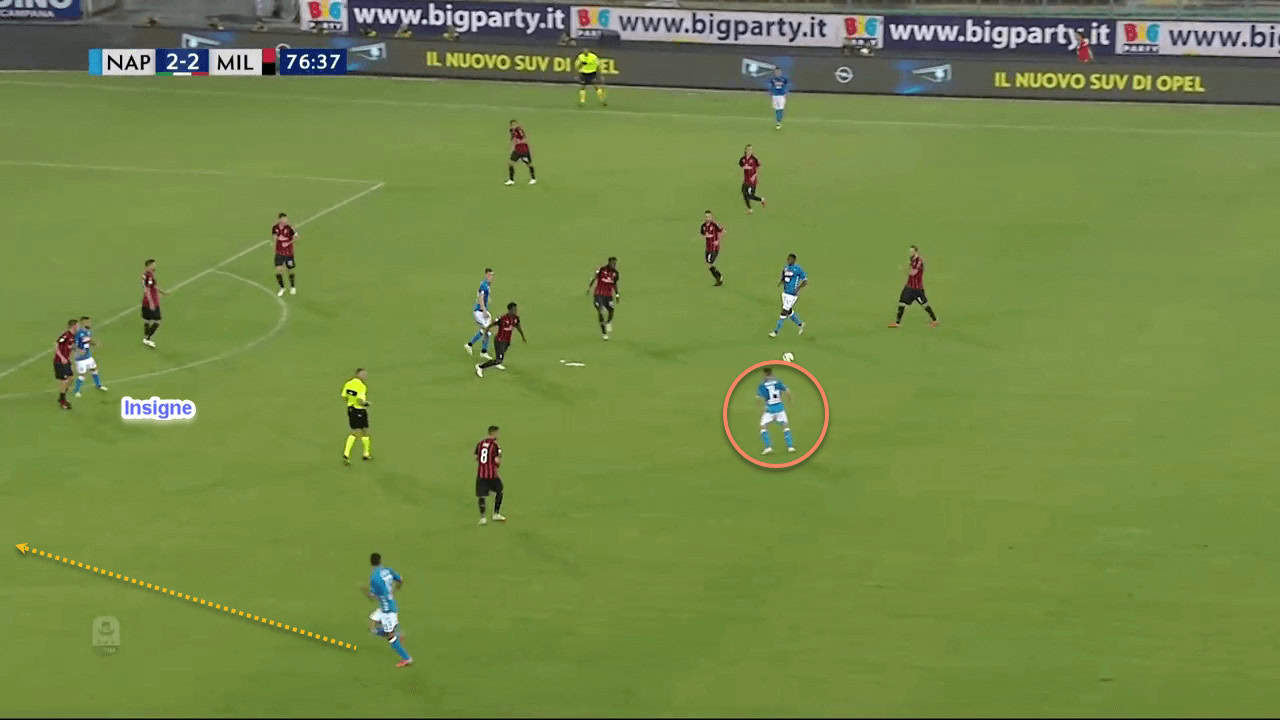
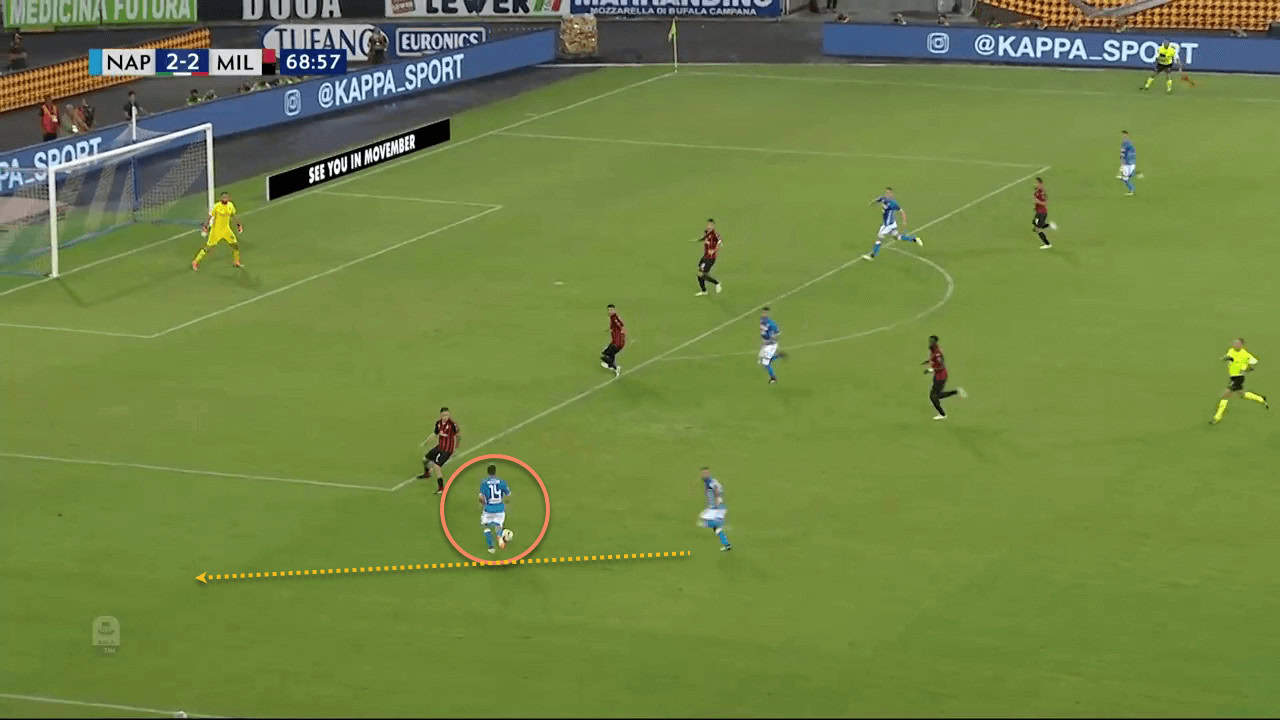
Conclusion
It was a hugely entertaining match between these two sides, and while Napoli had to dig deep to win the game after being two goals down, Carlo Ancelotti went some way to dispel the myth that he is merely a ‘horse-whisperer’ of sorts, with limited tactical knowledge – his changes brought the Partenopei back into the game and eventually helped them come away with a win.





Comments